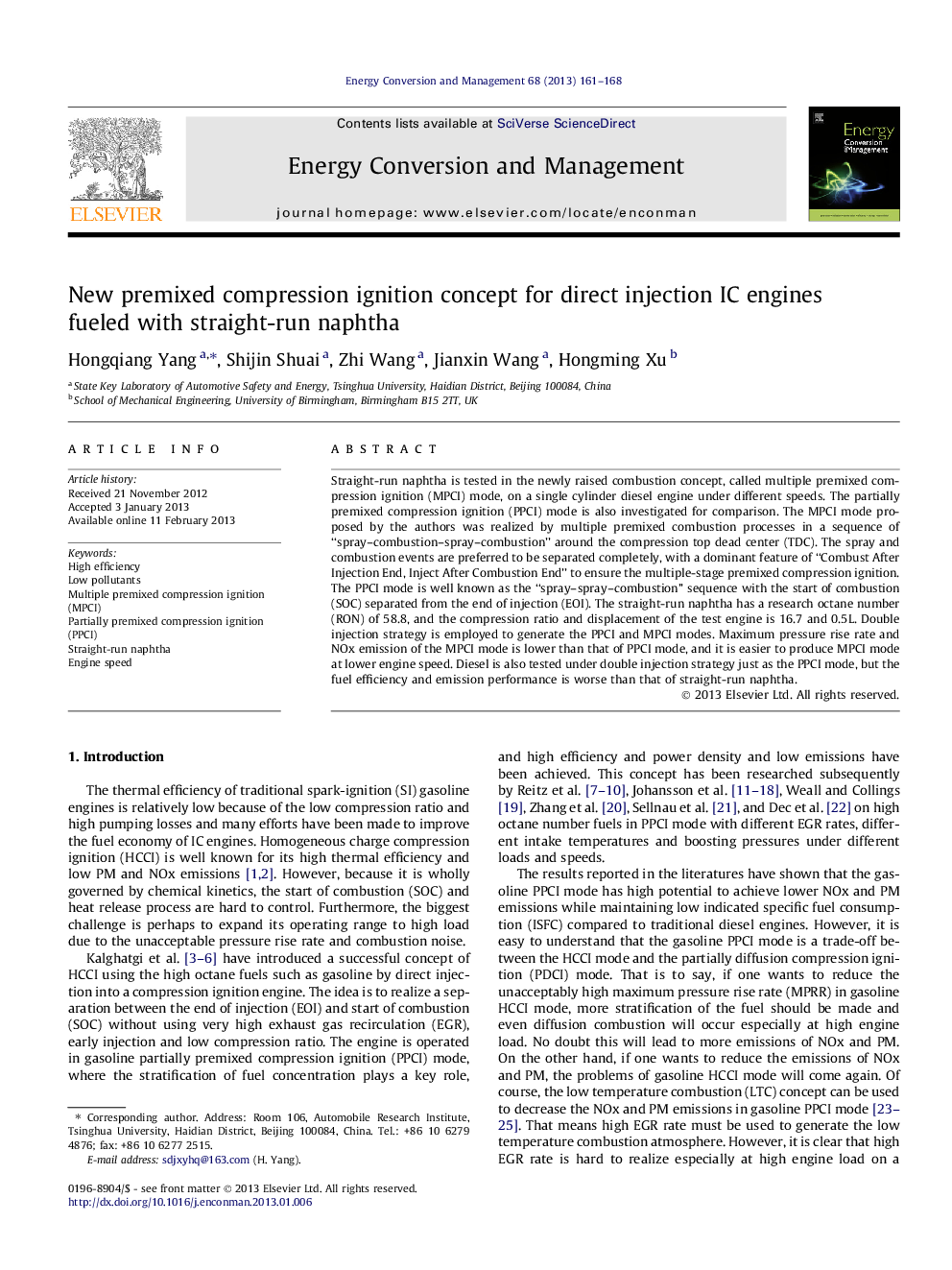| Article ID | Journal | Published Year | Pages | File Type |
|---|---|---|---|---|
| 764188 | Energy Conversion and Management | 2013 | 8 Pages |
Straight-run naphtha is tested in the newly raised combustion concept, called multiple premixed compression ignition (MPCI) mode, on a single cylinder diesel engine under different speeds. The partially premixed compression ignition (PPCI) mode is also investigated for comparison. The MPCI mode proposed by the authors was realized by multiple premixed combustion processes in a sequence of “spray–combustion–spray–combustion” around the compression top dead center (TDC). The spray and combustion events are preferred to be separated completely, with a dominant feature of “Combust After Injection End, Inject After Combustion End” to ensure the multiple-stage premixed compression ignition. The PPCI mode is well known as the “spray–spray–combustion” sequence with the start of combustion (SOC) separated from the end of injection (EOI). The straight-run naphtha has a research octane number (RON) of 58.8, and the compression ratio and displacement of the test engine is 16.7 and 0.5L. Double injection strategy is employed to generate the PPCI and MPCI modes. Maximum pressure rise rate and NOx emission of the MPCI mode is lower than that of PPCI mode, and it is easier to produce MPCI mode at lower engine speed. Diesel is also tested under double injection strategy just as the PPCI mode, but the fuel efficiency and emission performance is worse than that of straight-run naphtha.
► Straight-run naphtha with 58.8 RON is tested in a compression ignition engine. ► PPCI and MPCI modes are realized using double injection under different speeds. ► MPCI mode is easier to be achieved at lower engine speeds. ► MPCI mode has lower NOx emission and smaller MPRR than PPCI mode. ► Performance of diesel double injection is worse than that of straight-run naphtha.
